
One can easily fall in love with hazelnuts for many reasons beyond our control, the first being a chocolatey hazelnut spread, resembling Nutella.
You can spread it generously on pancakes, dip fresh strawberries into it, or devour the hazelnut spread directly from a spoon when no one else is watching.
On occasion, you can find hazelnuts in candies (taking the place of peanuts or almonds), they can also be consumed raw and, naturally, they taste amazing when toasted.
Not to forget about grinding them into flour for other lovely desserts or pressing them into a paste for homemade energy bars…
Before attempting to try out these woodland nuggets in some of the recipes, you’ll have to crack the shells and peel the dark skins first.
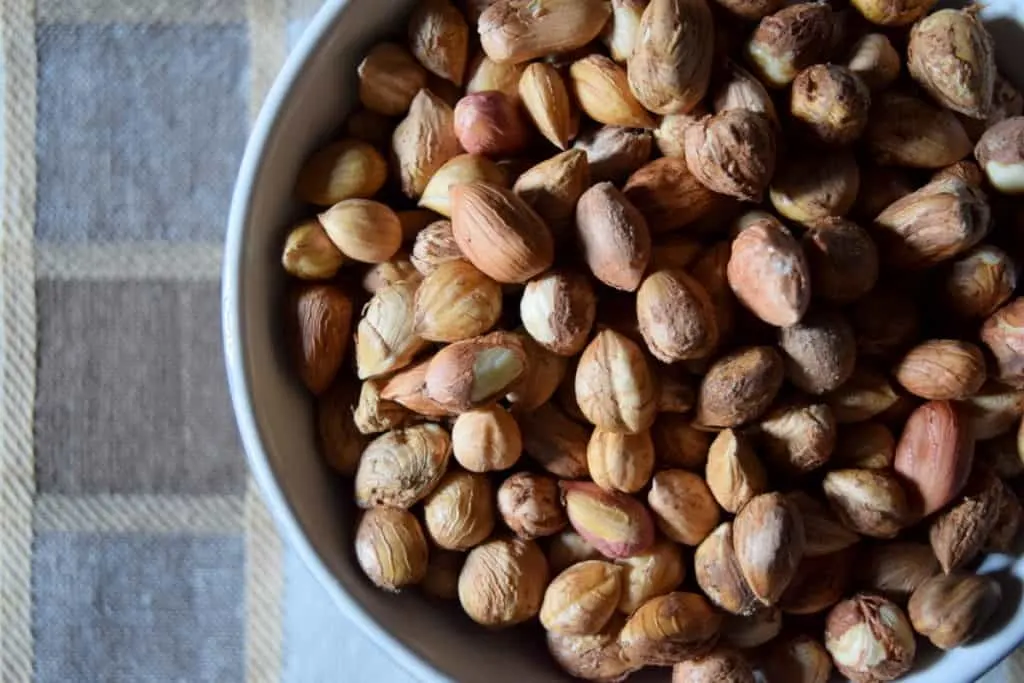
You’ll find out how to easily peel hazelnuts soon enough, but it is always good to know why you are eating certain foods, so let’s discover the benefits of hazelnuts.
Why eat hazelnuts?
Hazelnuts, otherwise known as filberts, are a year-round treat in our home, in addition to walnuts – both of which grow in the hills and forests surrounding us.
Foraging for hazelnuts in the wild, is a chore in itself. You need to seek out the shrubs with the best chance for harvest, and hope that you are among the first to grab the reward.
Squirrels, dormice and birds perhaps know better where the best bites fall, so keep your eyes out to see where the action is.
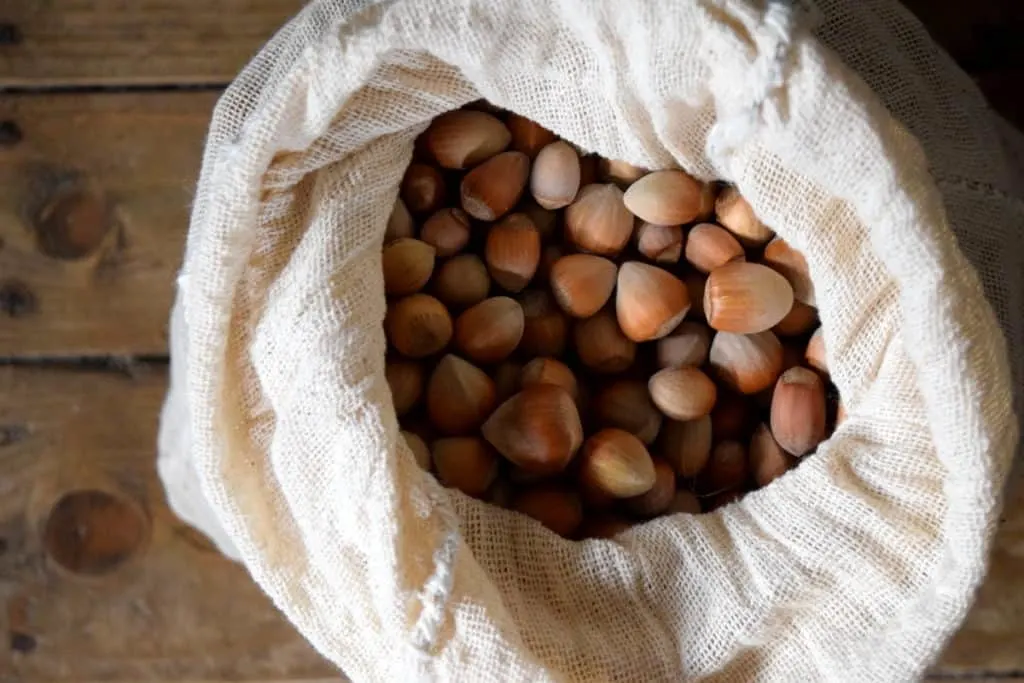
If the forest has no hazelnuts to offer, you’ll find plenty to harvest at the store, or online.
Hazelnuts are a treasure trove of healthy proteins, fats, vitamins and minerals.
They contain Vitamins E and B6, as well as magnesium, thiamine, copper and manganese – in addition to being rich in antioxidants.
The majority of the antioxidants, however, are mostly present in the skin of the hazelnut (that we are trying to remove here).
Which brings us to the caveat…
While peeled hazelnuts may be beautiful, there is also something to be said for imperfection. If hazelnut skins are, in fact, beneficial for you, don’t be so concerned to get every speck off. Trust in the process that if some peels remain, you are doing the body good.
Preparing hazelnuts for roasting
To get to the meat of the nut, you will need to pound your way in. Keep in mind that many hazelnuts may be too small for use in a traditional nut cracker.
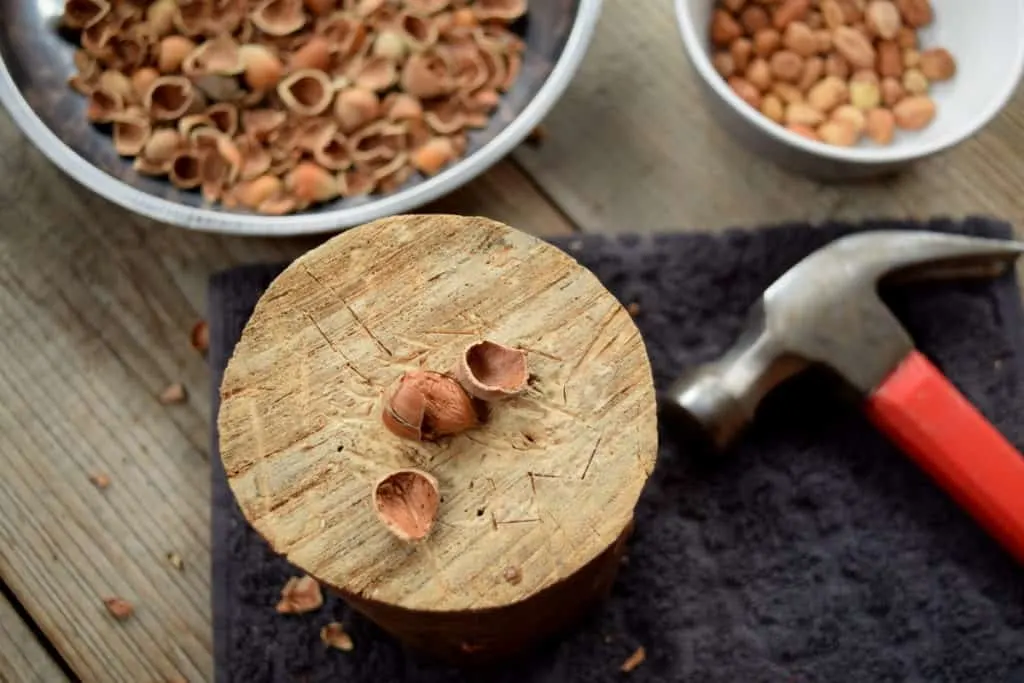
A hammer, wooden block, towel and a couple of bowls are all that it takes to get started – oh, and good aim too.
Once you have enough to cover the bottom of a baking sheet, spread them out and roast them in the oven.
Preheat oven to 350° F.
Watch the hazelnuts closely, for at about 10 minutes, they will begin to fill the room with an irresistible aroma. Sneak one out and sample for flavor. 15 minutes (total) in the oven should be more than sufficient for toasting.
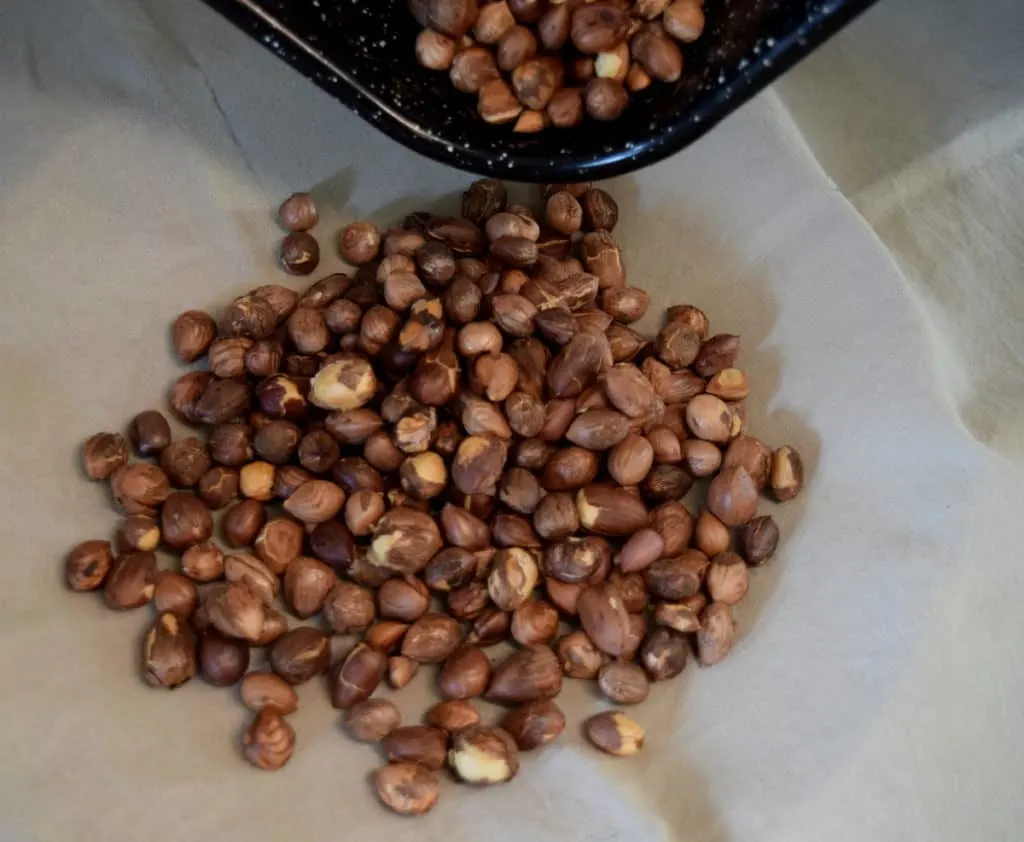
Always aim for an optimal light roast, where the skins are just starting to blister.
Wrap hazelnuts in a clean kitchen towel
Place a towel directly over a large plate, so as soon as the roasted hazelnuts come out of the oven you can pour them on top. Wrap the nuts in the kitchen towel, letting them sit and steam for 1-2 minutes.
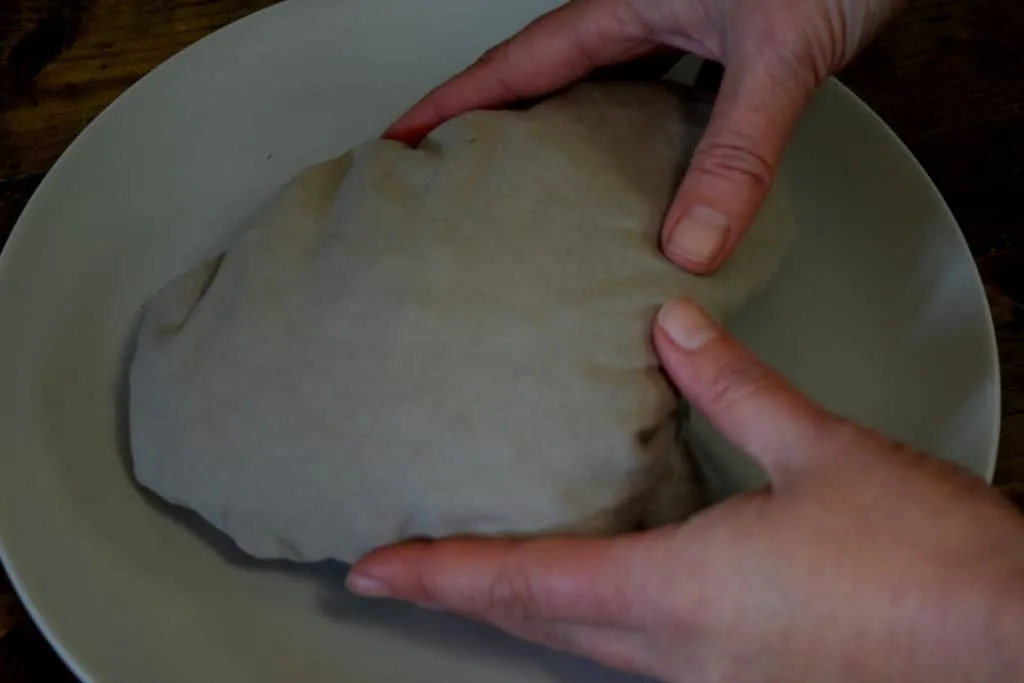
Then you can rub the nuts together in the towel to remove as much of the skin as possible.
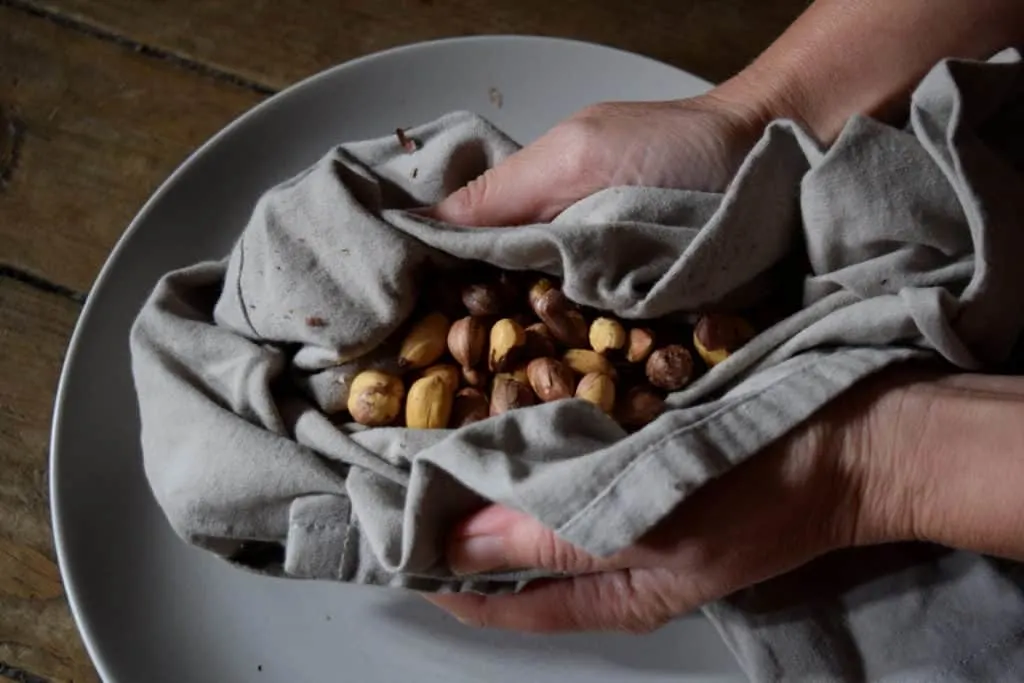
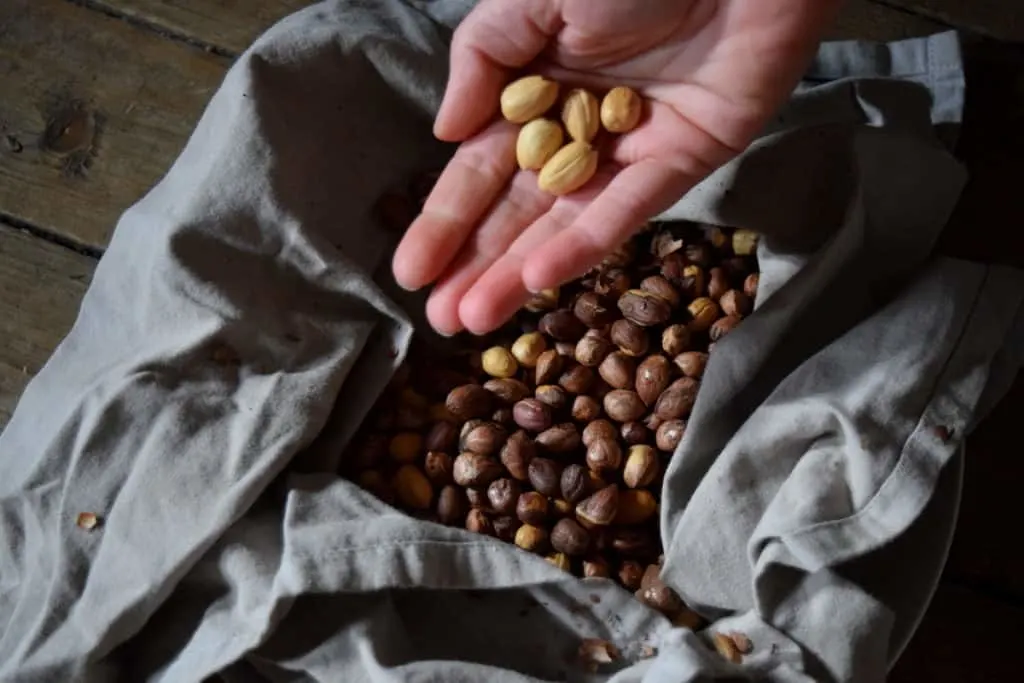
If it doesn’t all come off, feel free to set those stubborn ones aside, and use them in your morning bowl of oatmeal or muesli. Remembering that the skins are good for you!
Toasting hazelnuts in the oven is the easiest way to remove the peels – just toss in the heat, rub and remove.
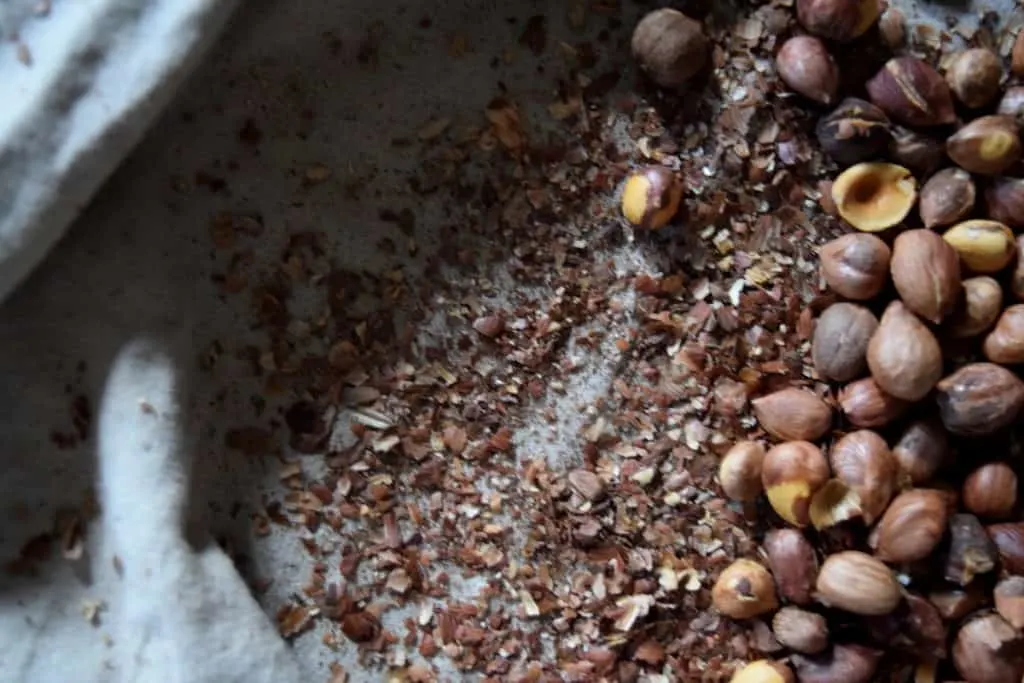
That being said, some people are searching for naked hazelnut perfection.
If this is the case, you may want to try a second method to peel hazelnuts that involves baking soda in a pot of boiling water.
Some people swear by this method, others call it “a waste of time” and a mess to clean up, not to mention the fact that it alters the texture/flavor just a teeny-tiny bit. You may want to try them both and see what works best for you.
How to use up your tasty hazelnuts
Every once in a while you will want to impress others, as well as yourself, with recipes new to you.
Go out on a limb and experiment with new hazelnut combinations, or go with the tried, tested and true experiences of other cooks.
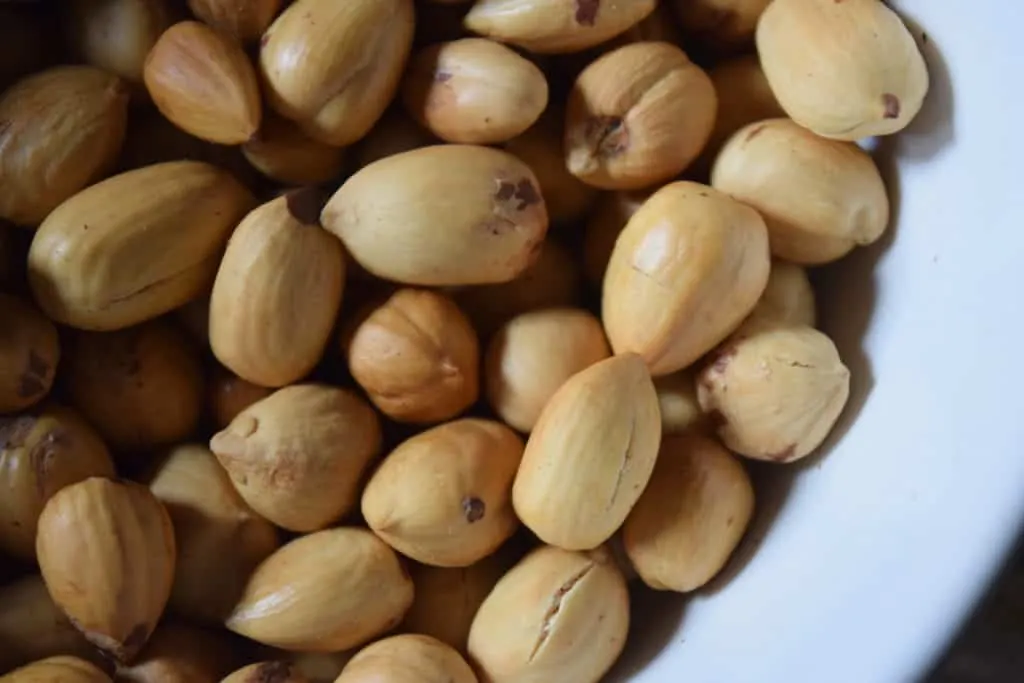
A short list of the sweetest recipes involving hazelnuts to try:
4-Ingredient Nutella (Vegan + GF) is a gem of a recipe. It can be sweetened with maple syrup rather than sugar, and there is an option for a melted-chocolate version and a cocoa powder one.
Store it in a clean jar at room temperature and see how long it lasts – 2 to 3 weeks or more?!
Chocolate hazelnut balls are uncomplicated to make, and no-bake too. If you need to create a dessert in a short amount of time, this is just the inspiration you need.
Of course, life would not be complete without a hazelnut and chocolate cake. It takes 2.5 cups of toasted and peeled hazelnuts, along with a plethora of other goodies: dark chocolate, coconut oil and full-fat coconut milk, maple syrup, vanilla bean powder and farm fresh eggs.
One more sweet option for using hazelnut flour brings us to low carb hazelnut chocolate sandwich cookies. Kids love them, adults adore them, what’s not to love?
Savory hazelnut recipes
More salty than sweet, nuts combine well with many meats – and vegetables too!
Savory hazelnut and cauliflower nut loaf with mushroom sauce is a dish that will open your eyes and allow your taste buds to experience something entirely different. If you are seeking a meat-free option for entertaining, this is the one to eat.
Red cabbage, apple and hazelnut salad makes for an excellent side dish, pairing well with any protein. If you grow your own apples or raise your own cabbage in the garden, know that this is a simple salad that can be made any day of the year using roasted or raw hazelnuts.
One amazing way to put those nasturtium leaves to good use, is to make a hazelnut nasturtium crumble. You have never eaten anything quite like this! It is unique, especially tasty and absolutely wonderful.
Now, that you are empowered to peel more hazelnuts, the big question is, what will you cook next?
Pin This To Save For Later
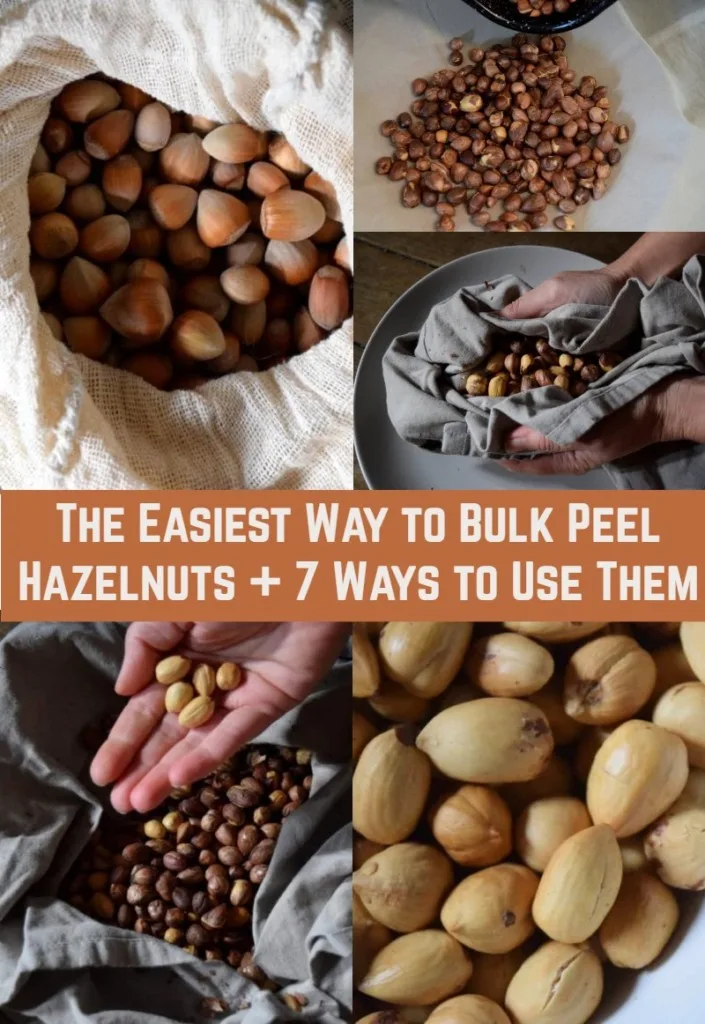

Get the famous Rural Sprout newsletter delivered to your inbox.
Including Sunday musings from our editor, Tracey, as well as “What’s Up Wednesday” our roundup of what’s in season and new article updates and alerts.


